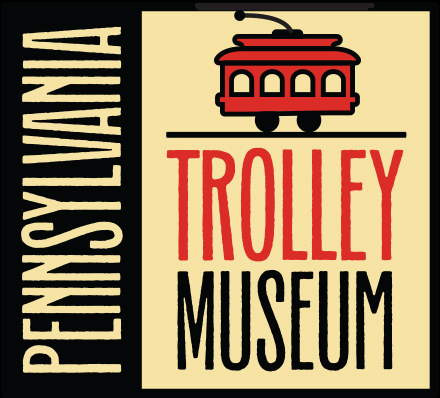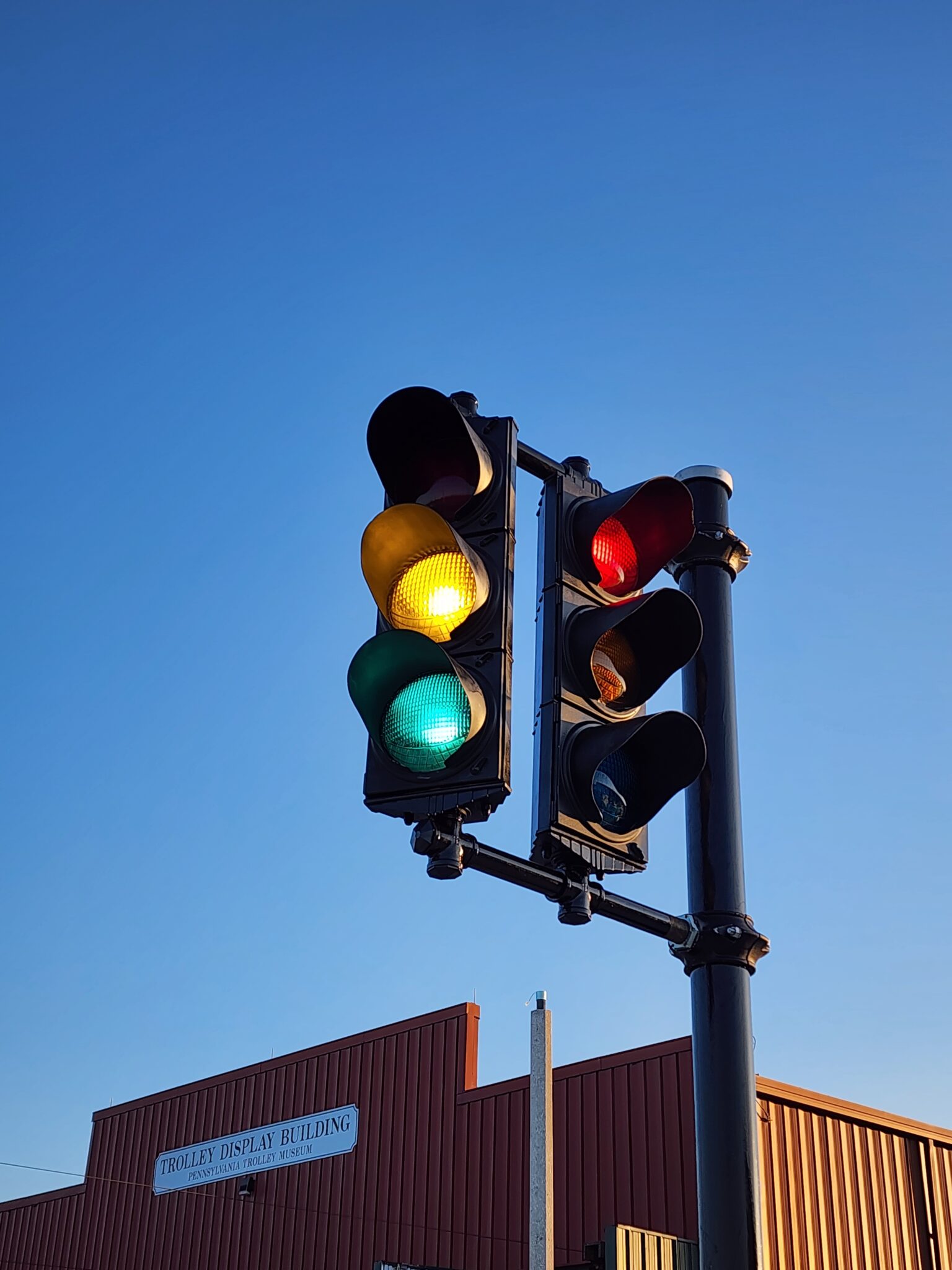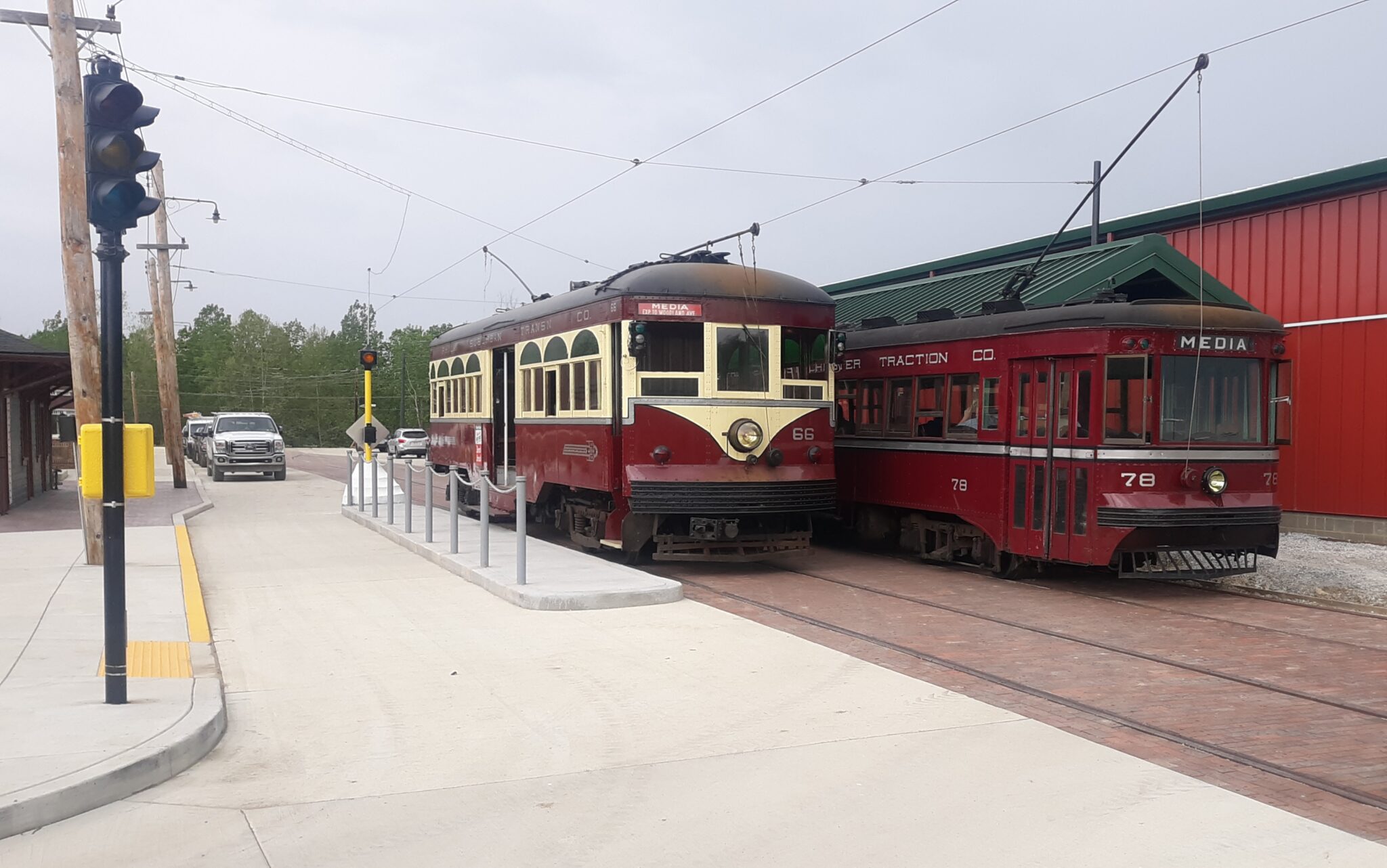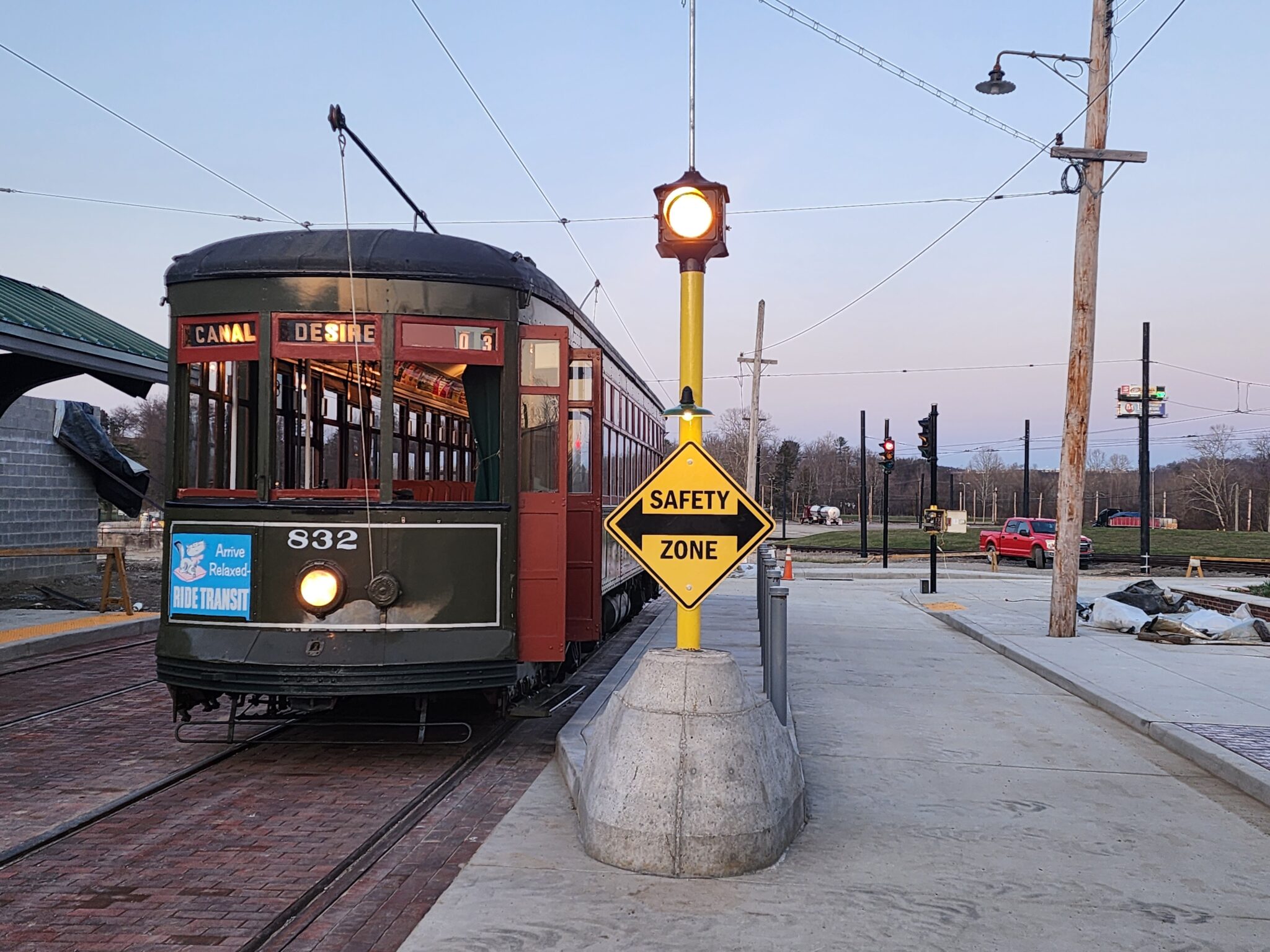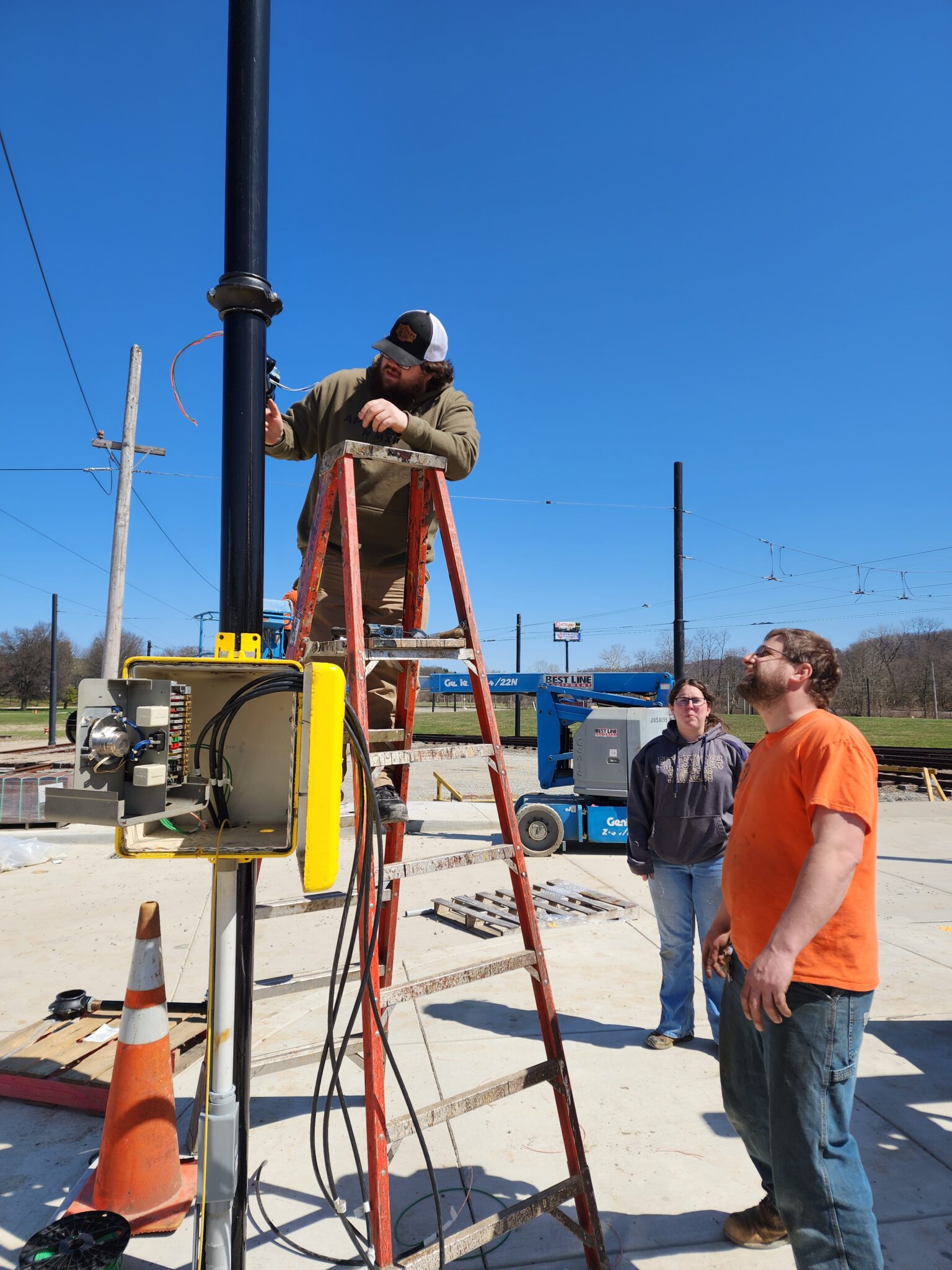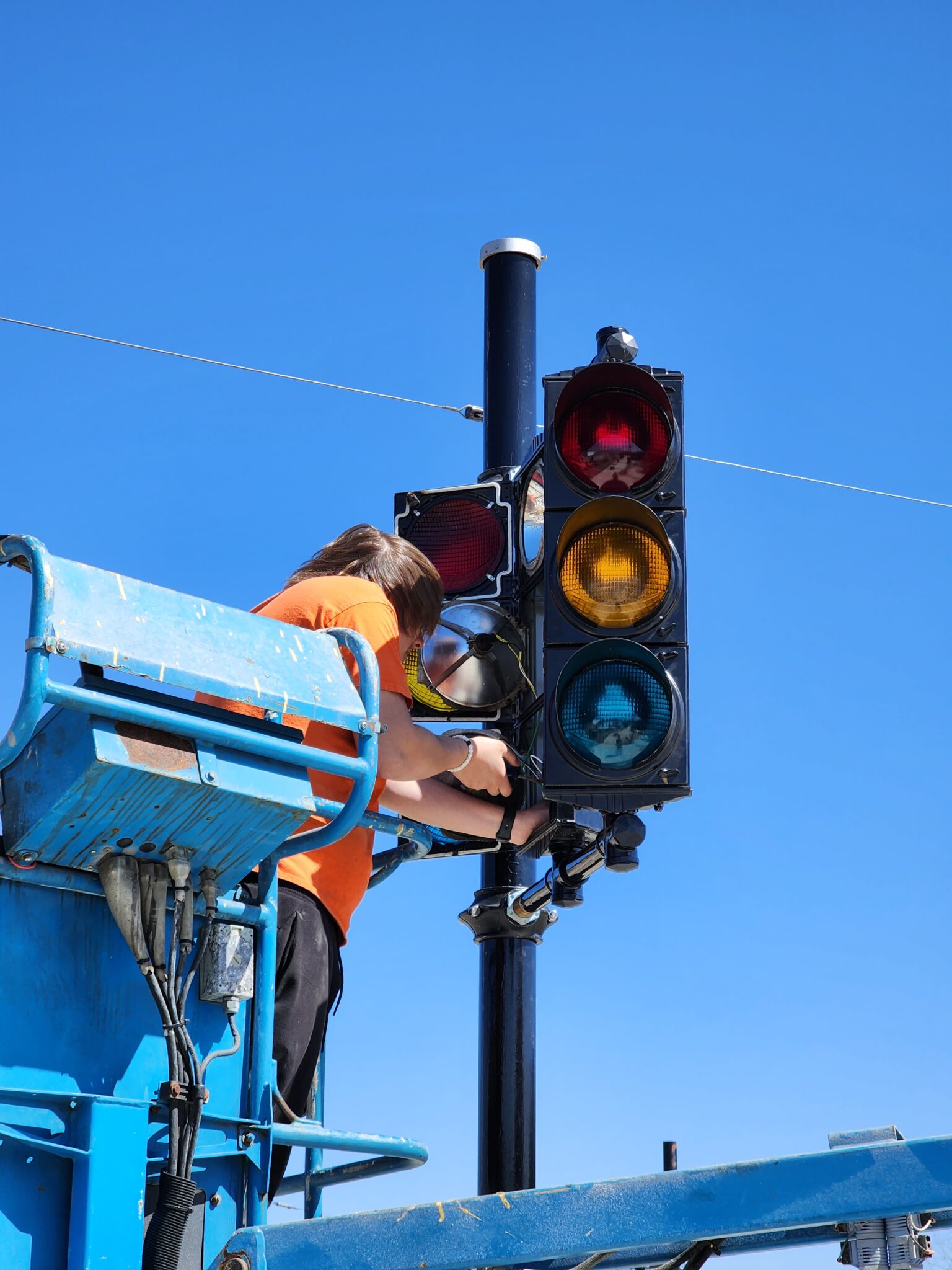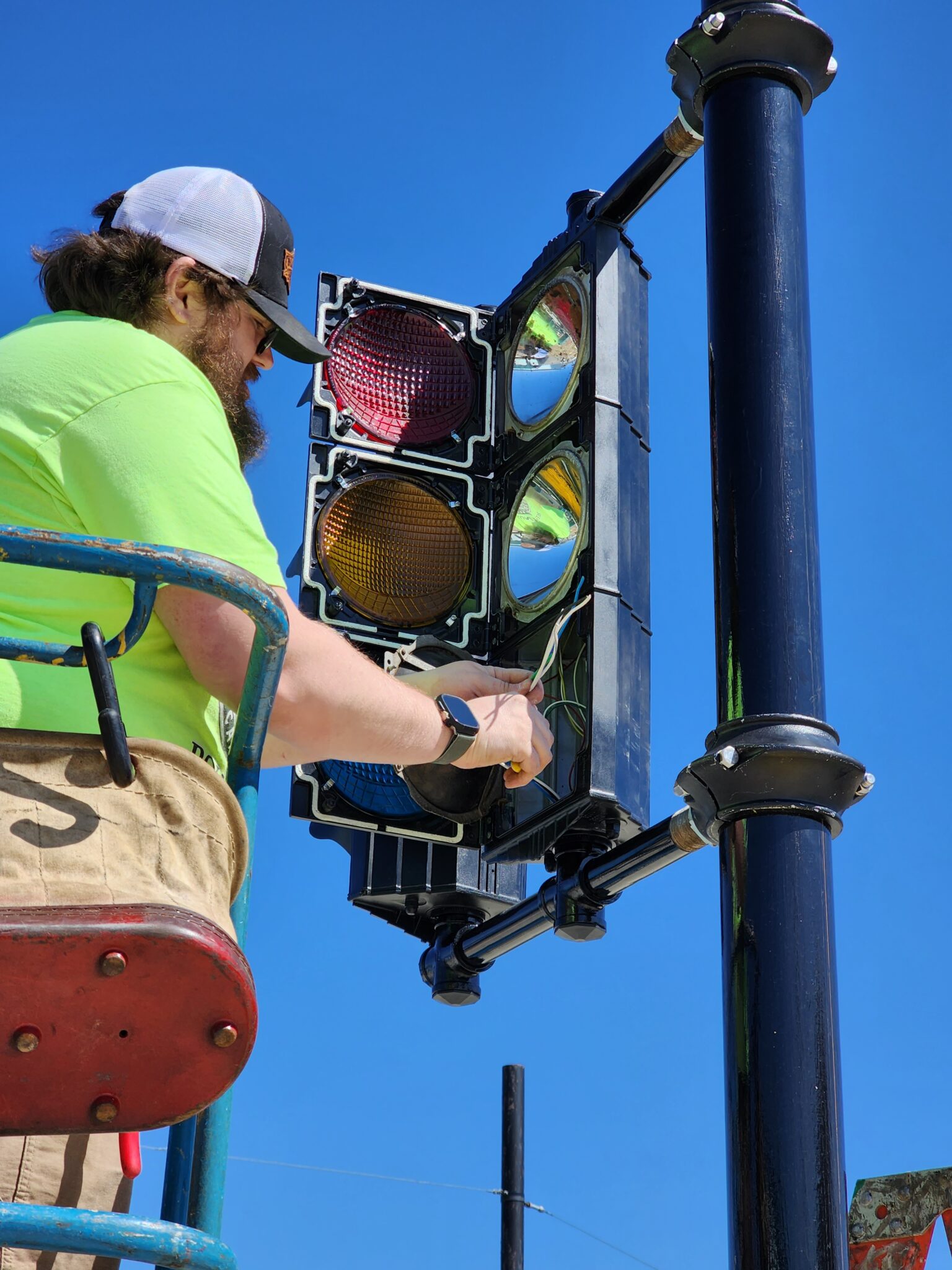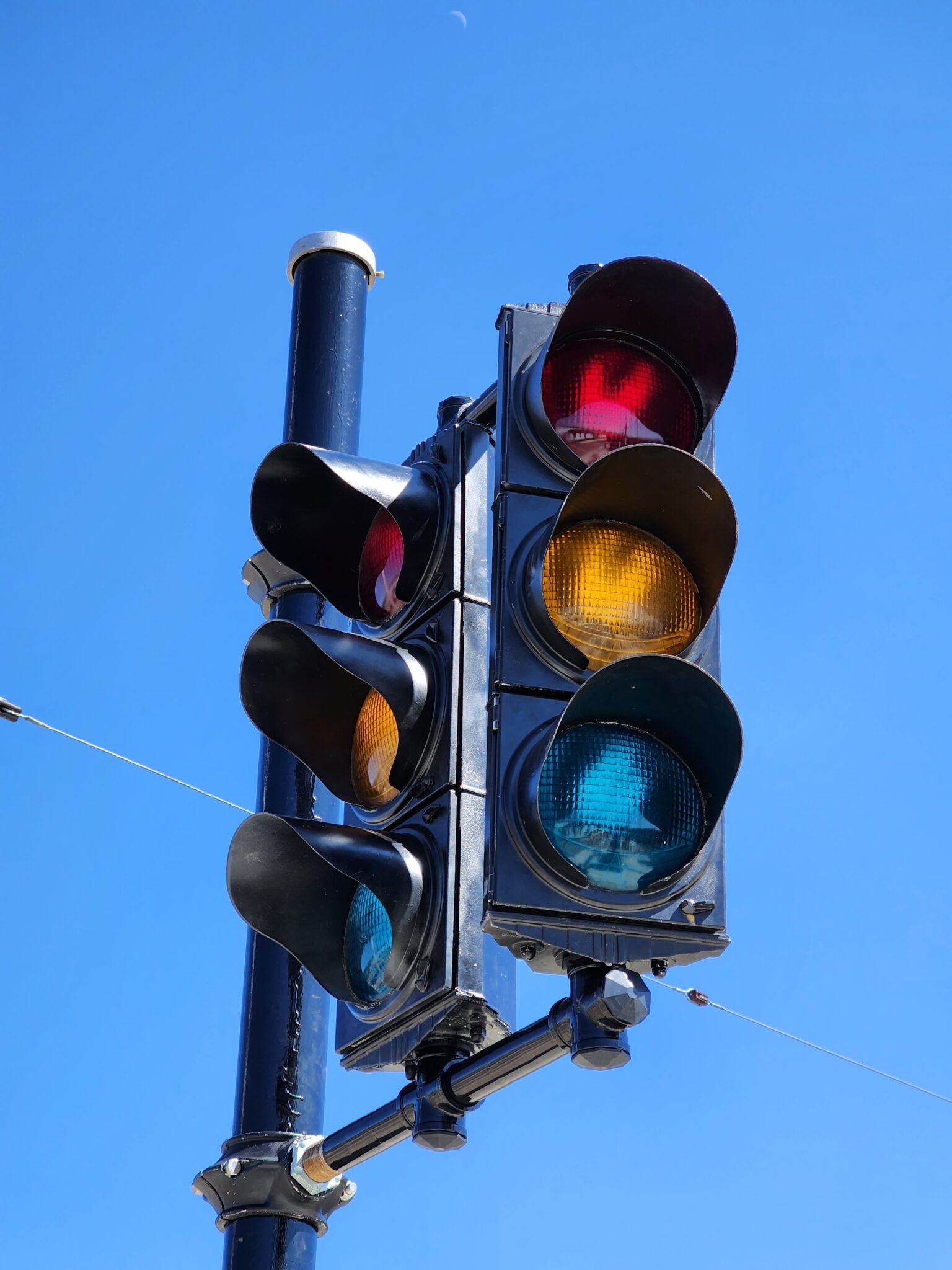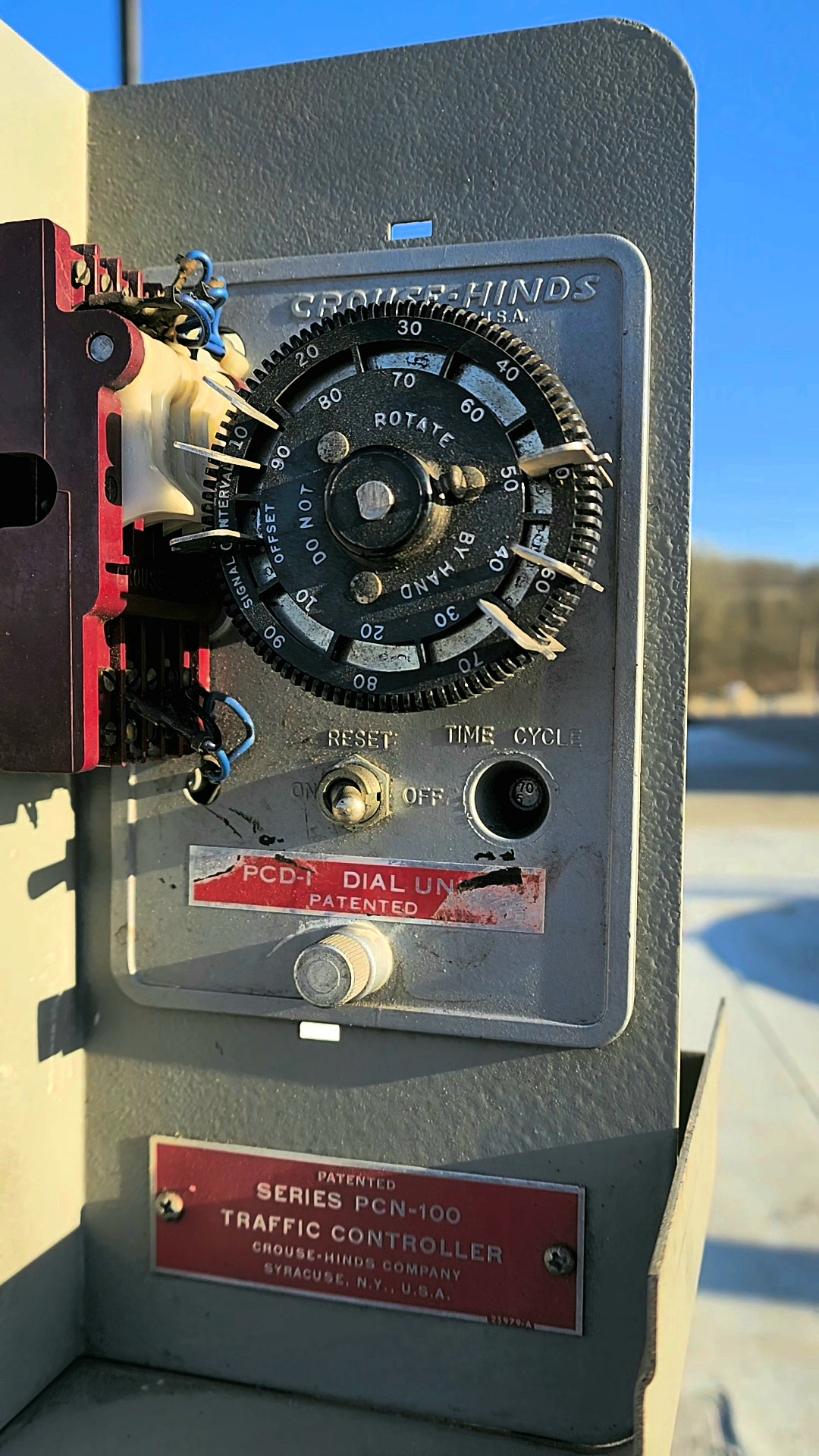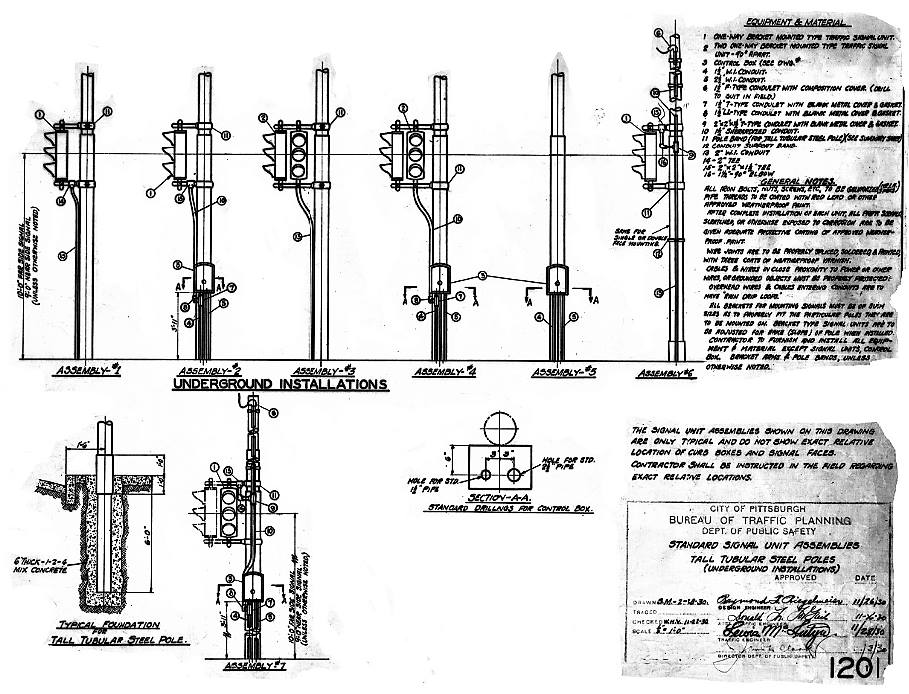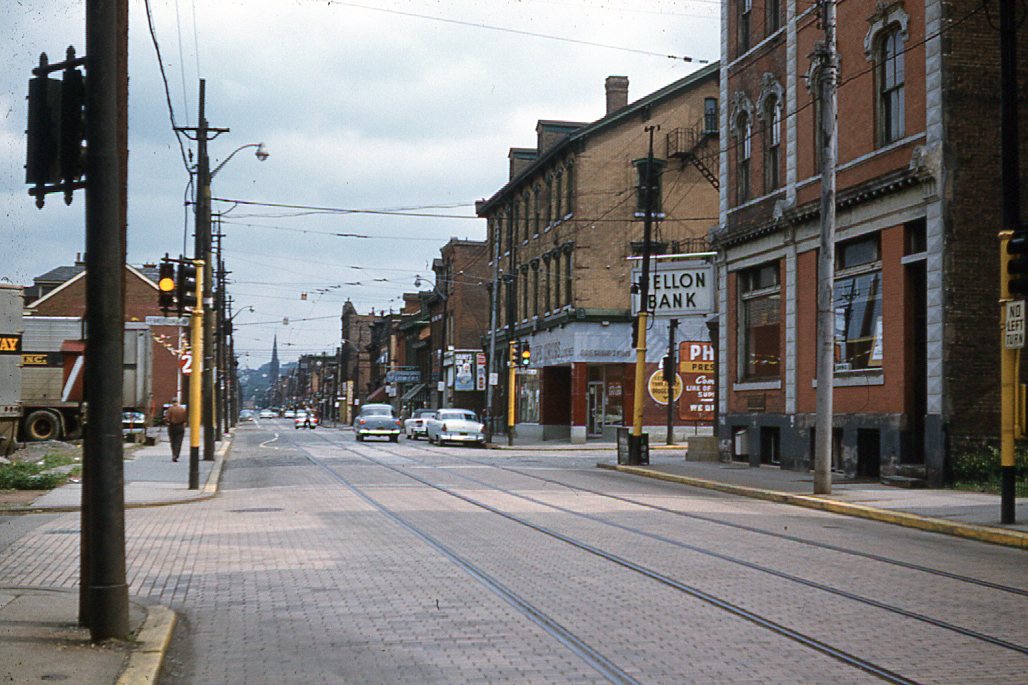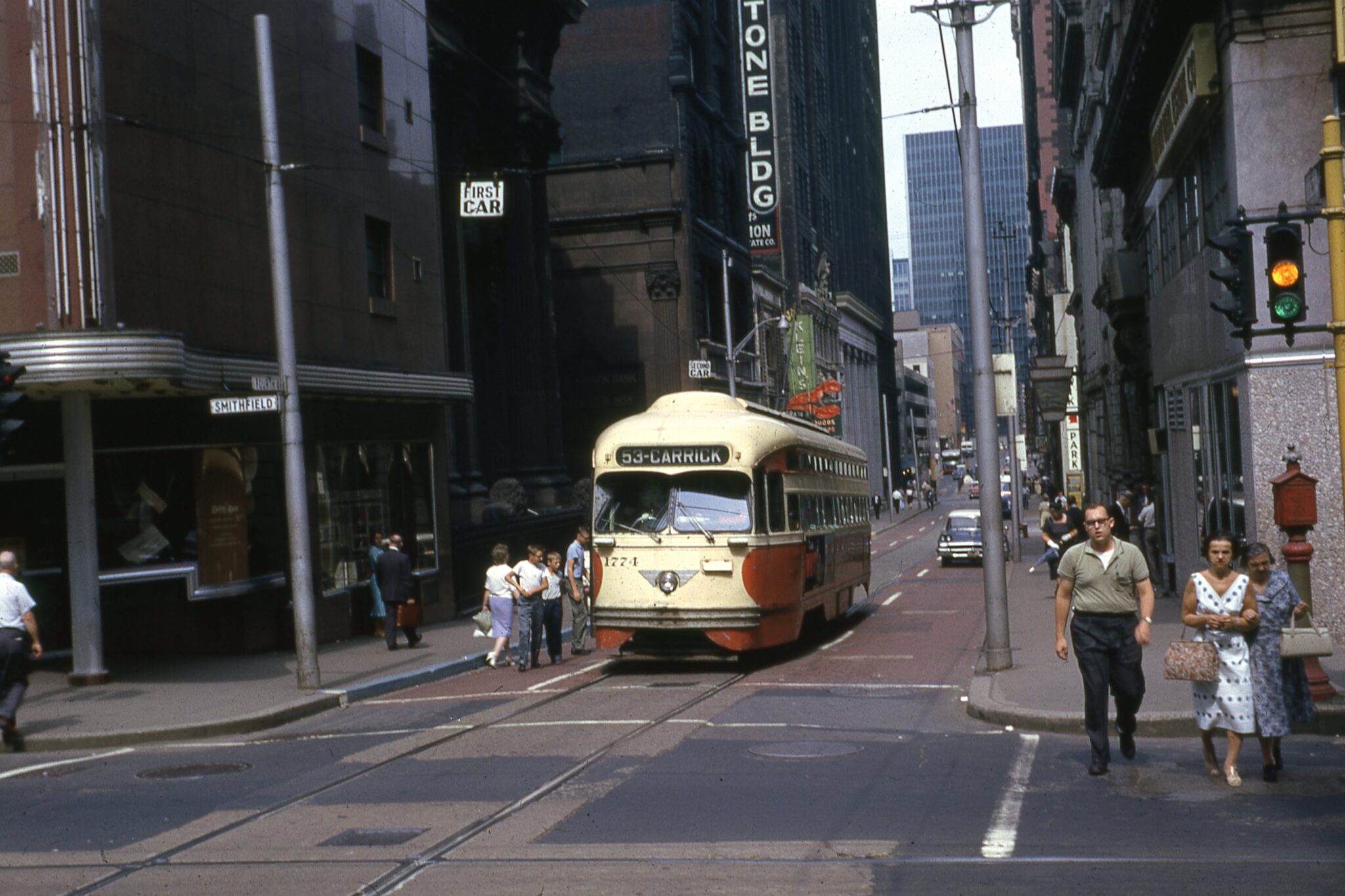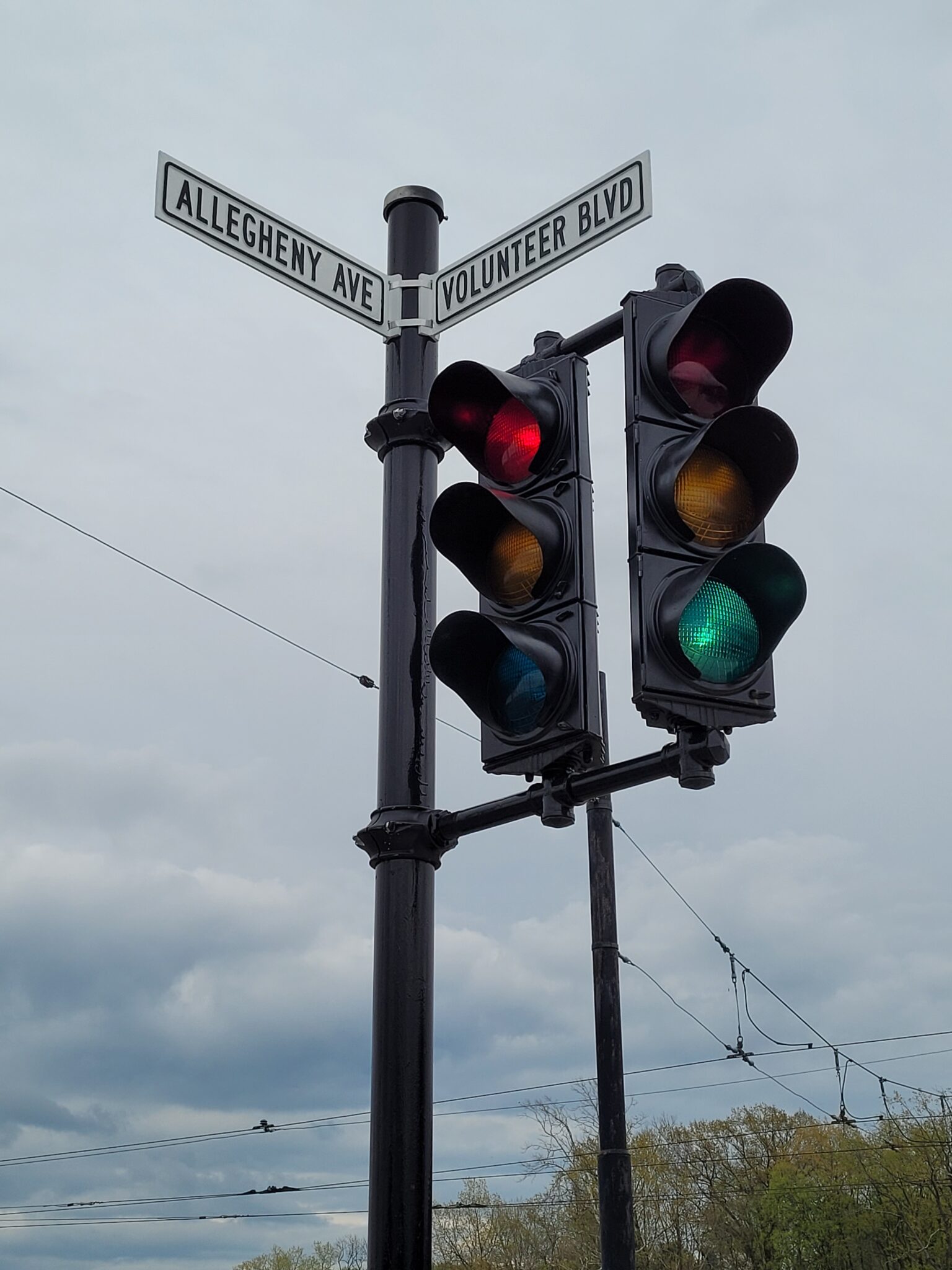Kristen Fredriksen, Jack Demnyan, and Alex Bruchac
The Pennsylvania Trolley Museum’s future Welcome and Education Center isn’t the only new thing at our East Campus – a brick-paved street called Volunteer Boulevard now separates the new building from the Trolley Display Building which houses about 30 streetcars.
The street isn’t just decorative – it incorporates many historical pieces including canopy supports from the Pittsburgh & Lake Erie Railroad station, the 1908 Wexford station, and a fully operational traffic control intersection featuring the traffic signals with the yellow-over-green indication once common in the Pittsburgh area.
The idea for such an exhibit originated with volunteer Alex Bruchac’s donation of a 1950s vintage four-way signal and machine. Alex retired from the City of Lakewood, Ohio, a western suburb of Cleveland, where he was the traffic signal technician. Rather than junking the old fixtures and machines during the years he spent updating intersections with modern equipment, Alex sent them to several trolley museums for exhibits instead. The type of signal Alex donated would have hung in the middle of the intersection on a span wire.
Having that type of signal hanging over an intersection that had trolley tracks (and more importantly overhead trolley wire) wasn’t quite the right fit, though, notes PTM volunteer and board trustee Father Jack Demnyan. “We also envisioned a dewirement over the intersection with the likely result of Alex’s vintage signal being destroyed [by a wayward trolley pole]. The more accurate alternative is what is being installed – eight pole-mounted signals, one signal for each lane of traffic.”
“When I was in McKeesport,” explains Father Jack, “I noticed that the city still had a couple appropriately vintage traffic lights that were soon to be upgraded.” These lights were made by Crouse Hinds, one of the corporate predecessors of Eaton, PTM’s neighbor in Washington, PA, and were likely to be replaced either with stop signs or modern signals. As it turned out, the city electrician responsible for maintaining the traffic lights happened to be a parishioner.
“His name is Tom Rosso, and without his support, none of what’s happening would be possible. At first, he was amused that the local priest was asking about traffic signals, and then flummoxed when I proceeded to ask for a full intersection worth! But after I explained the plans, he quickly supported the idea and sought and obtained Mayor Cherepko’s permission to donate the signals and associated parts to PTM.” All told, he donated around 10 or 11 signals plus multiple spare parts, including additional lenses for the signals.
“They’re nicknamed smiley lenses because the bottom third of the lens is crescent shaped – the idea was that the light would be directed downward so pedestrians could see the aspect more easily. In reality, it just looks like the lens is having the time of its life with a huge grin,” Jack quips.
Following the design from Dennis Bockus and fellow engineering volunteer Larry Lovejoy, subcontractors and volunteers installed the support poles and underground conduits, and Operations Manager Kevin Zebley led several volunteers in hanging the signals and running all the cabling required.
“My efforts were to overhaul the controller and change the sequence adding the historic Green – Yellow/Green – Yellow – and Red indications,” Alex Bruchac notes. That’s what is different about the signal at Volunteer Boulevard – the “Yellow over Green” phase that happens between the “Green” and “Yellow” phases. The intent of the Yellow over Green was to give pedestrians a heads-up that the signal was about to change and that they shouldn’t start crossing the street – effectively, a “Don’t Walk” signal. The 1960s traffic controller itself is another product of Crouse Hinds saved from an intersection in Lakewood, Ohio.
The full traffic control intersection will be in regular operation soon at the Pennsylvania Trolley Museum, with a vintage cast-iron mailbox and a pair of embossed yellow stop signs yet to be installed elsewhere along Volunteer Boulevard. The signals have already been activated during special events, and trolley operators are abiding by the signals. Why? With not only pedestrian traffic but also occasional vehicular cross traffic at that intersection, the traffic lights are just as important as the other signals along the line when it comes to safety. And we’re a museum – we’ll be demonstrating something that every streetcar running on the streets would’ve done. Plus, signal priority for transit vehicles is a modern-day convenience, not a trolley era reality!
